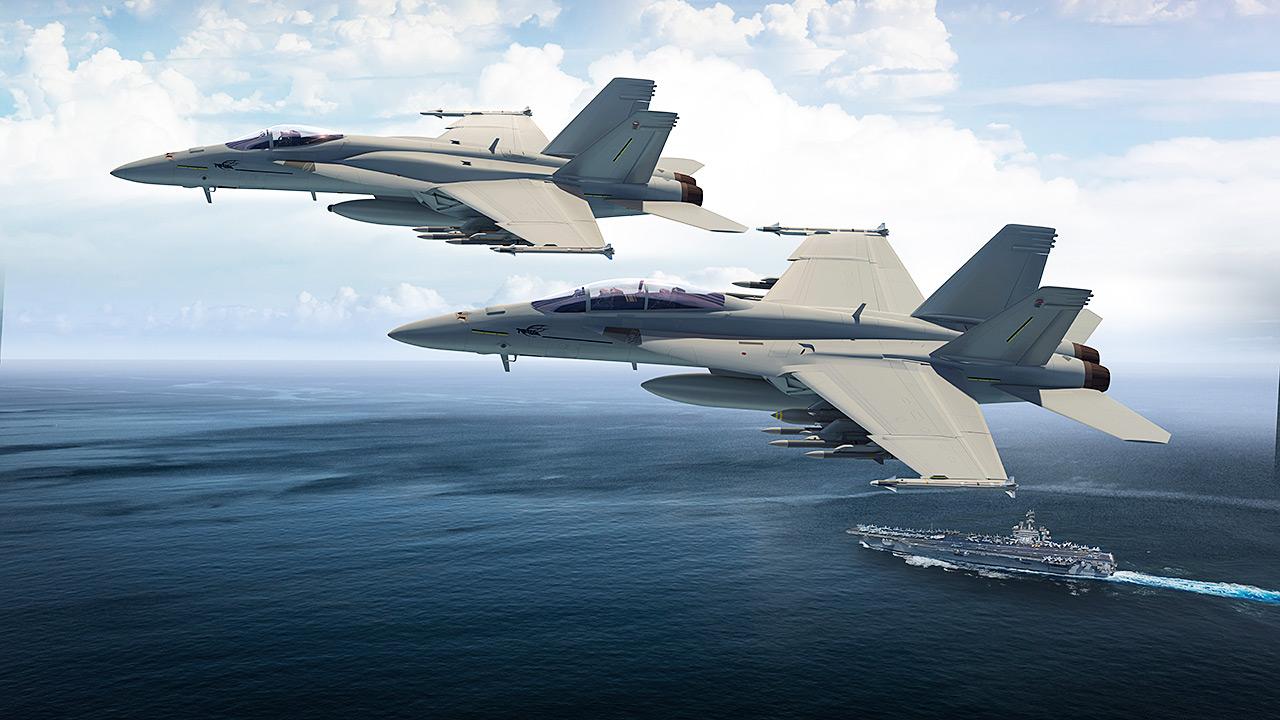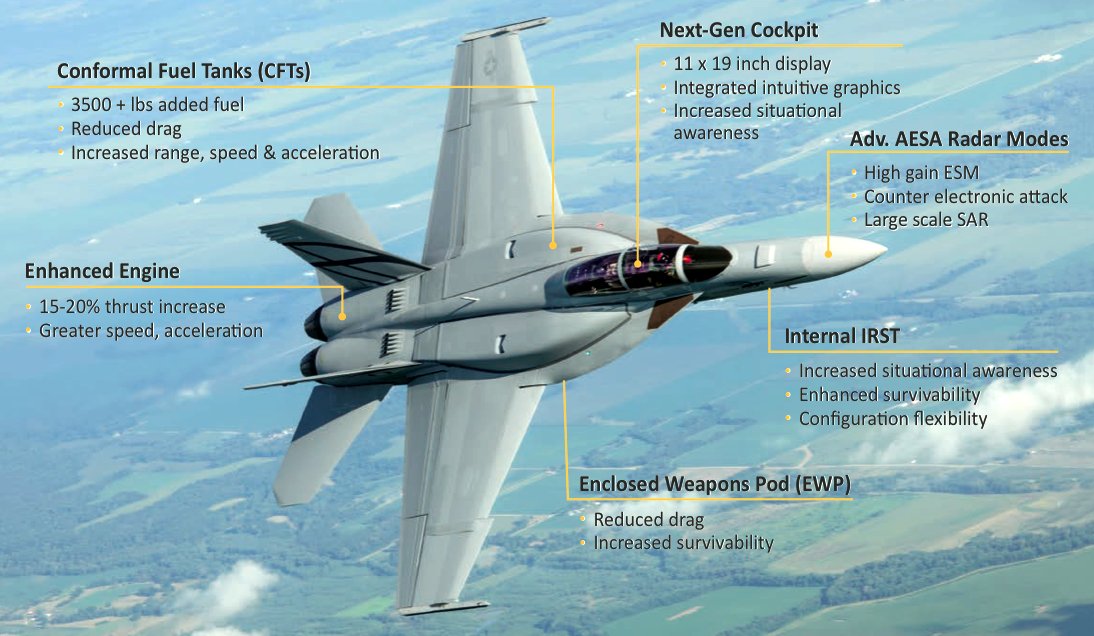As the Indian Navy gears up to purchase a carrier-based fighter jet, American defense giant Boeing appears confident that its F/A-18E Super Hornets Block III / 3 variant would put the French Dassault Rafale out of competition.
Ukraine Deploys ‘Dummy Soldiers’ In Full Combat Gear With Assault Rifles In Kharkiv To Bamboozle Russia
Both the F/A-18 and Rafale-M twin-engine fighters are vying to secure the contract to operate from India’s 40,000-tonne indigenous aircraft carrier (IAC). The carrier Vikrant is set to be inducted into service in August.
The acquisition program for India’s multi-role carrier-borne fighters (MRCBF) aims to procure 57 naval fighter jets to be outfitted with Vikrant. Currently, India operates the MiG-29K from the Vikramaditya aircraft carrier which is to be phased out by 2034.
F-18 Super Hornet Block III Variant
Alain Garcia, vice-president of India business development, Boeing Defense, Space and Security, and Global Services, who flew the Super Hornet in the US Navy, earlier said the company’s variant was appropriate for India, emphasizing the importance of the Block III design in generating a uniform tactical picture.

For nearly 40 years, the McDonnell Douglas F-18 multi-role fighter has served as the US Navy’s flexible workhorse. Multiple variants of the F-18 have been released throughout four decades to stay current and competitive, with each being a more advanced iteration than the previous one.
‘Made In Russia, Recycled In Ukraine’ — Putin’s Best Fighter Bombers Are Being Sold As Souvenirs In Ukraine
The original Block I “Hornet” was a fourth-generation fighter that entered service in 1984 after being designed in the 1970s. The Block II “Super Hornet” was delivered in 2005, and last year, the US Navy accepted delivery of the Block III, dubbed the “Super ‘Duper’ Hornet.”
Block 3 is on offer to the Indian Navy and is set to demonstrate its capabilities at the Indian Navy’s Shore Based Test Facility INS Hansa in Goa later this month. Earlier in January, Dassault Rafale had undergone testing at the same facility.
One of the most significant objectives for Boeing would be to show that the F/A-18E can work with the Short Takeoff But Arrested Recovery (STOBAR) gear installed on Indian aircraft carriers.
On the SBTF’s 283-meter ski jump, the plane will do a sequence of takeoffs, touch-and-go flights, and landings. Ski ramps similar to those found aboard Indian aircraft carriers have inspired the mock-up.
The F/A-18E has undergone extensive modeling and testing, according to Garcia, to validate its performance from aircraft carriers outfitted with a STOBAR system.
“We did over 150 computer simulations before doing testing to validate the performance,” Garcia said.
Even as Boeing India has heaped praises on its aircraft and projected it as ideal for the Indian Navy’s aircraft carrier, it is worth examining what could make the F/A-18 a ‘super’ choice for the Indian Navy.

Super-Duper Hornets
The carrier-based F/A-18E/F Block III Super Hornets are built for high-load, high-stress operations. It has a reasonable cost in terms of per flying hour and requires minimal support equipment while retaining high mission readiness, according to Boeing.
The F/A-18E/F Block III Super Hornet can act as a force multiplier for the Indian Navy because it interfaces with assets like the P-8I.
While the cockpit of Block II had a kaleidoscope of panels and gauges, the cockpit of Block III has been simplified with the Advanced Cockpit System, which has a basic (and customizable) 1019-inch touch screen.
The integrated display in the streamlined cockpit was designed to assist the pilot access more information more rapidly. The new cockpit is easier to operate, offering the pilot a better “view” of the battlespace.

Block III was built with enhanced features to help collect and distribute information when information sharing becomes a standard element of battlefield equipment.
The Tactical Targeting Network Technology (TTNT) data link will allow Block III to share information. Although the F-35 Joint Strike Fighter remains the most advanced system in terms of networking capabilities, the Block III F-18 marks a significant upgrade over Block II.
Despite a smaller radar cross-section, Block III lacks stealth. Boeing engineers, however, have sought to make Block III more difficult to “lock on” to. Enemy aircraft or surface-to-air missiles may be able to see the Block III, but obtaining a weapons-grade lock and engaging the Block III will be challenging.
The lifespan of Block III is 66% longer than Block II. Block 3 is expected to last 10,000 flight hours compared to the Block II variant, which was only rated for 6000 hours. The longer lifespan, of course, lowers expenses and is better suited for a fighting force that is prone to never-ending combat operations.

Block 3, which was designed with China in mind, not only has a greater range but also has great abilities than its predecessor.
In case of a conflict between the US and China, the Block III will be able to execute sorties against Chinese targets by loitering beyond the range of China’s hypersonic anti-ship missiles – thanks to conformal, shoulder-hugging, drag-reducing fuel tanks capable of carrying 3,500 pounds of fuel.
The Block II variant, or the F-35 for that matter, would have required US carriers to loiter and launch missions from within China’s missile range, which would have been an unacceptable risk for the United States. However, the Block 3 variant of the Super Hornets addresses that issue.
Boeing’s Offer To India
Boeing India has developed a unique program module to make its proposal more appealing to India’s military and manufacturing industries.
At first glance, this program appears to reinforce India’s ‘Make in India’ objective, which supports the country’s domestic manufacturing industries and boosts its Micro, Small, and Medium Enterprises (MSMEs).
Boeing releases a video of the F/A-18 Super Hornet successfully performing a ski-jump launch. Says it demonstrates the Block III Super Hornet’s compatibility with Indian Navy carriers. pic.twitter.com/KHmrxy6o59
— Manu Pubby (@manupubby) December 21, 2020
For fitting into the Indian standards, the Super Hornet’s ability to fly off a “ski jump” ramp was proven by Boeing and the US Navy in December 2020, demonstrating the aircraft’s preparedness for Indian aircraft carriers.
The Super Hornets have already proven their mettle with the US Navy and the Australian Air Force and would be a tremendous force multiplier to any military.
While the Boeing proposal is appealing, the Indian Navy will undergo extensive tests to determine which fighter plane – Rafale-Marine or Super Hornets will best compliment the Vikrant.
- Contact the desk at etdesk@eurasiantimes.com
- Follow EurAsian Times on Google News




